The Ripper’s Lorry Murders 5: Bristol, Sussex and Essex
by TIM HICKS & CHRIS CLARK
~~~~~
Until now, the conventional wisdom was that all of Sutcliffe’s attacks were launched from his car. Chris however was convinced that this was not so and conducted his research on the basis that Sutcliffe used his lorry on some of the murders.
In this article, the authors have collated all the cases that Chris has identified as committed from Sutcliffe’s lorry, not his car. They are shown as V5 in Column F “Vehicle Used” in Table 13, here.
The cases are not in chronological order for editorial reasons of space management and to group some cases by force area in each article. They are in nine parts as follows:
The Ripper’s Lorry Murders Part 1. Bedgebury Forest Woman
The Ripper’s Lorry Murders Part 2. Ilkley: Ilkley: Proof positive
The Ripper’s Lorry Murders Part 3. More ligature killings.
The Ripper’s Lorry Murders Part 4. Doncaster and Sheffield
The Ripper’s Lorry Murders Part 5. Bristol, Sussex and Essex
The Ripper’s Lorry Murders Part 6. “Hope”: More witnesses
The Ripper’s Lorry Murders Part 7. Leicester and Nottingham
The Ripper’s Lorry Murders Part 8. Hammersmith and Leicester
The Ripper’s Lorry Murders Part 9. London
Background: Sutcliffe’s access to lorries
“Sutcliffe then started employment as a lorry driver on the 29th of September of 1975 working for a Common Road Tyre Company, Okenshaw situated at the junction of the M62 Motorway and a spur off the M606 into Bradford; the work involved short and medium distance hauls all over the North and the Midlands. He used the experience to familiarise himself with the network of motorways and trunk roads linking its destinations to each other including the best access routes to many towns and city centres an art that he perfected from his already overall extensive knowledge that he had gained from socially driving around the North of England, the Midlands and London and Home Counties.
However after just over a fortnight’s employment on 15 October 1975 he was caught stealing second hand tyres and the police were informed. Sutcliffe was arrested and during the following year after entering a guilty plea at a later court hearing on 5 March 1976 he was fined and he was later sacked in that April for bad time keeping.
In October 1976 Sutcliffe finally found work as a lorry driver for T&WH Clark (Holdings Ltd) situated on the Canal Road Industrial Estate between Shipley and Bradford. They were a small engineering transport firm and working for them took him all over the country and involved a lot of overnight stops where he would use the bunk bed in the rear of the cabin and he was once on his own again with no one to account to and left to his own devices. He started proving himself over several months in one of the firm’s four and six ton big rigid Lorries and then onto a Ford Transcontinental which at £250,000 was the most expensive and advanced HGV vehicle in England at the time.
Sutcliffe clearly suffered from ‘little man syndrome’ as well as ‘obsessive compulsive disorder’ and enjoyed the height, mass and speed of the lorry; as well as spending hours cleaning and polishing both the inside and outside of the cabin whilst awaiting loading and unloading. This would have removed any forensic evidence from the cab.
At work Sutcliffe was one of Clark’s most conscientious drivers who kept immaculate logs and repair records. His workmates saw him as a loner who never showed any sign of violence did not swear or speak crudely about women although he christened his lorry ‘Wee Willie’ which was a source of amusement for them. Sutcliffe was well liked by his bosses and colleagues alike and was recognised to be brilliant at roping-and-sheeting large and often difficult loads. He was the person that everyone turned to when they got a delivery ticket for an unfamiliar town he had ‘A-Z’ street maps for every possible destination.
At Clark’s at the beginning of 1980, Sutcliffe must have felt he had got a really secure job even a job for life. The firm had been forced to sack all their drivers for alleged thefts from the loads but not him. He had been the one exception the one driver Chairman Tom Clark felt he could trust. Yet there were those at Clarks who had noticed Sutcliffe’s habit of occasionally turning up at work with false number plates on his car. A fact considered insignificant by his workmates, at least until the first weekend of 1981.
The management had been so impressed with Sutcliffe regarding him as possessing all the virtues required by the best lorry drivers that he was chosen to appear in a promotional brochure for the firm. In the following photograph he is shown hair in place, beard neatly trimmed as usual behind the wheel of ‘Wee Willie’ and a giant enlargement of the photograph was given pride of place in the entrance to the firm’s offices.”
It is now clear that Sutcliffe used his lorry -not just his car- to commit murders. This verifies the authors belief that Sutcliffe’s offending was not just confined to West Yorkshire and Greater Manchester, but potentially covered every force area in the UK that Sutcliffe’s work as a lorry driver took him to, as shown in the lead illustration. That is, all over England and parts of Southern Scotland.
A ligature could have been used in several crimes that I have researched, including the Nude in the Nettles murder. What is not known as I do not have the pathologist reports on them is whether a ligature was found to have been used in any other of his admitted catalogued crimes prior to the summer and autumn of 1980 when he used a ligature in his last three attacks.
Sutcliffe was forensically aware and never fouled his car with forensic evidence from his victims’ death. Sutcliffe was very well regarded at Clark’s Transport for keeping his lorry clean and for being meticulous about cleaning the cab. Obviously to remove any forensic evidence.
The authors believe that Sutcliffe attacked women while he was driving around the country in his lorry. Here Chris gives the background and more information on the individual murders the authors believe were committed from Sutcliffe’s lorry.
Margaret Frame (Case 45) Sussex Police
On October the 12th 1978, Margaret Frame vanished on her way home from Falmer High School in Lewes Road, Brighton, where she worked as a cleaner. She was described as a quiet woman, who was devoted to her nine year old son, Andrew. Her husband Peter raised the alarm after looking for her himself the next day.
Ten days later her body was found in a shallow grave in Stanmer Park, Brighton. The 36-year-old, of Saunders Hill, Coldean, had been stabbed in the back and raped. Her throat was slit from ear to ear, but no knife was ever found. Police believed that a serious attempt had been made to remove Margaret’s head.
The killing of this dark-haired mum in 1978 prompted hundreds of people to contact detectives with offers of help.
She had been attacked from behind, struck over the head, then stabbed in the back. Later, the killer returned to the wood and dragged her naked body for 500 yards before inflicting further mutilation on her body and violating it. It is not known whether it was penile rape or an object was used, although clearly no DNA evidence was left behind inside the victim. Her attacker then attempted to sever her head before burying her in a shallow grave. All her rings were removed.
Mrs Frame was eventually found by police searchers ten days after she disappeared. Despite intensive police inquiries, the “beast of Stanmer Park”, as he became known, was never brought to justice. Police took about 2,500 statements and made house-to-house enquiries at more than 5,000 homes.
I first looked at this case whilst researching my book “Yorkshire Ripper: The Secret Murders” however it was not included as at that time because there was insufficient information available to me. I now consider that Margaret Frame was probably a victim of Peter Sutcliffe because:
-
- Sutcliffe visited Brighton both for work and pleasure.
- The victim was an unaccompanied female attacked from behind in a public place at night-time for sexual purpose
- The Ripper signature of Blunt force trauma (hammer?) injuries to back of head was present
- Mrs Frame had been stabbed in the back and mutilated using both a knife and a screwdriver to mutilate. This is similar to the murder of Josephine Whitaker who had a screwdriver thrust back and forth inside her vagina for Sutcliffe to replicate intercourse whilst he masturbated over her.
- The killer returned to the initial scene of the attack, then dragged the body some distance to a further attack scene and final resting place, where there was further mutilation of body and genitalia.
- He body was concealed in shallow grave but available to be found as in the 1977 case of Yvonne Pearson.
- There were stab wounds to Mrs Frame’s neck and throat as with the attacks on victims Wilma McCann 1975, Emily Jackson 1976 and Irene Richardson 1977, whose throat was slashed. Mrs Frame’s throat had been cut from ear to ear as in the attacks on Kay O’Connor 1974, Rosina Hilliard 1974, Eve Stratford 1975 and Lynda Farrow 1979.
- An attempt had been made to decapitate the body as in the attack on Jean Jordan in 1977.
- There were no reported “Ripper” attacks in the ten months between the Vera Millward’s murder on the 17th of May 1978 and the attack on Ann Rooney on the 12th of March 1979; eight months if you include the case of Lynda Farrow on the 19th of January 1979.
- The case was investigated and considered as a Sutcliffe crime by retired Chief Constable Keith Hellawell in his original list of police crime files and Brighton shown on murder map in the 1996 documentary “Silent Victims”.
- Sutcliffe used to take rings from corpses when he worked as a gravedigger
Commendably, Sussex Police has not slackened its efforts to resolve the case. There was an appeal for information in 2000, on the twenty-second anniversary of Margaret’s death. Argus report here. Sussex Police gave the NYE this media comment:
Media Statement by Sussex Police
“The murder of Margaret Frame remains unresolved at this time. However the case forms part of Sussex Police Crime Review Team’s schedule of unresolved major cases and is assessed every two years, to examine any new information that has been provided, or to consider advances in investigative techniques, that would make a review or re-investigation viable. It has been fully reviewed on several occasions, including within the past ten years, but there are no new lines of enquiry and there are no current developments.
Currently no new information has been provided in this case and there are no outstanding lines of enquiry. We will always examine any new information or forensic opportunities which might lead to new lines of enquiry whenever they arise. Anyone who has any new information that could lead to new lines of enquiry can always contact Sussex Police on line at https://www.sussex.police.uk/contact/af/contact-us/ or by calling 101 at any time, quoting Operation Harbour.”
Wendy Jenkins (Case 53) (Avon & Somerset Police)
In this case, the authors are not completely certain that Sutcliffe used the lorry. It is possible he used his car, so it is marked up as V3/5 in Table 13.
Wendy Jenkins was a thirty-two-year-old prostitute who disappeared in Bristol on Friday the 24th/Saturday the 25th of August 1979. Her body was found concealed under a pile of sand at around 8.30am on Tuesday, August 28, 1979. She had been stabbed and sustained severe head injuries. Her handbag, shoes, a coat and nylons were found in an alley nearby.
According to this Bristol Live report, a witness who is believed to be the last person to have seen Wendy alive, saw Wendy talking to a tidily dressed man in his 30s, about five foot eight with shortish hair, at the junction of City Road and Drummond Road. Sutcliffe was eliminated because the police strongly believed the murderer was a local man.
Chris also considered this case when researching his book “Yorkshire Ripper: The Secret Murders” but again did not include it because of lack of information. However, his research continued and he now believes Wendy was probably a victim of Peter Sutcliffe:
- Sutcliffe had been to Bristol in connection with buying a car.
- Sutcliffe was often mistaken for a coloured man at night because of his dark complexion and curly hair. As described by victims here at 6:00, 14:00 and 33:00 minutes, and a witness at 24 minutes, and as shown in the illustration below.
- Sutcliffe fits the witness description. He was a smart dresser, his height was between five foot seven and five foot nine and he was aged thirty three in 1979.
- Wendy was a prostitute which fitted Sutcliffe’s victim preferences. He used multiple red light districts.
- Sutcliffe enjoyed driving and travelled long distances. He used the motorways to attack in different cities and liked to have a clear exit route to a motorway. The abduction point at the junction of City Road and Drummond Road is about seven minutes’ drive from the beginning of the M32, which heads North East eventually to the M1 and Bradford.
- There is no evidence that the murderer was a local man. The Yorkshire Ripper was considered as a suspect at the time and Detectives from West Yorkshire Police working on the Ripper enquiry visited Bristol to confer with their colleagues from Avon and Somerset Police, but Sutcliffe was eliminated. This may have been because at the time, the criteria devised by Superintendent Charlesworth were unreliable and too restrictive. In particular, the key criteria used to designate a ripper attack specified that the attack had to have been made with a hammer. The existence of stab wounds may have been enough to eliminate the Ripper as a suspect, although he had stabbed Debra Schlessinger to death on the 21st of April 1977. When Sutcliffe was arrested in 1981, he was in possession of two knives, a hammer and a ligature.
Commendably, Avon & Somerset Police have not given up hope of bringing Wendy’s killer to justice. It is still actively pursuing the investigation:
Media statement by Avon and Somerset Police
“Unsolved murder cases are never closed. They are subject to regular reviews to check whether new techniques, such as advances in DNA technology, can be used to generate further lines of enquiry.
We’re extremely grateful to the public for any help they can provide us and we often receive calls with new information, even on some of our oldest unsolved cases. The murder of Wendy Jenkins in 1979 remains unsolved. Her killer or killers need to be brought to justice to help give her family some form of closure.
I would urge anyone with information on who killed Wendy, or why she was killed, to come forward now. Even the most seemingly insignificant piece of information could be the key to solving this case.
If you can help, or want to speak to the police, please call us via 101 and tell the call handler you want to speak to the Major Crime Review Team.”
Alison Morris (Case 54) Essex Police
On Saturday the 1st of September 1979, 25 year old University Lecturer Alison Morris she went out for an early evening walk from her home in Wrabness Road in the village of Ramsey, Essex, down to the nearby River Stour; before a planned evening at home with her parents.

Alison Morris next to Peter Sutcliffe, showing his swarthy dark complexion and afro style hair, which is off the collar and could be described as “shortish”. Sutcliffe varied his hair length and the style of his facial hair.
As she walked down a lane through the woods about 70 yards off the B1352 Wrabness/Harwich Road some 250 yards from her home at around 6.30pm on the 1st of September 1979, a man came up behind her and with incredible viciousness stabbed her repeatedly in the chest with a single bladed knife.
An hour later as she had failed to return home Alison’s father went out to look for her and came across her body in Bernard’s Lane only 250 yards away.
The Senior Investigating Officer in the case stated ‘It was obviously by a man whom both the police and public must do everything they can to remove him from society-the sooner the better.’ He went on to say ‘We can’t do other than conclude that the attack was made by a mentally deranged person or by a person for some sort of sexual gratification. It is more than likely that he may attack again.’
The local police were baffled as there was no sexual assault or robbery and they stated that it made it the work of a man totally deranged. At one stage a man about 5’10” with a small beard and wearing a long light trench coat was being sought.
In 2004 Essex Police issued a renewed appeal for information, on the twenty fifth anniversary of Alison’s murder, which revealed that Peter Sutcliffe had been a suspect in the original 1979 investigation. East Anglian Daily Times report here.
In 2012 there was another appeal for information, covered by the Harwich and Manningtree standard here.
One line of enquiry in the murder was that it was a Ripper attack. However, as this press comment from Essex Police to the NYE makes clear, Sutcliffe was ruled out at the time because of the timing and distance of Sutcliffe’s attack on Barbara Leach in Bradford.
Media statement by Essex Police
On 1 September 1979 Alison Morris, 25, was murdered after going out for a walk. She was fatally stabbed as she walked along the B1352 near to Harwich Road in Ramsey, Essex. Her murder remains unsolved.
As part of our enquiries into this case we did consider whether Peter Sutcliffe may be a possible suspect, however he was ruled out for a number of reasons including his involvement in a crime in Bradford on the same day.
As with any case that remains unsolved, it is never closed and they are continually reviewed. This will include looking at original information and any fresh lines of enquiry, making use of any advances in technology and generating new appeals. It’s never too late for people to come forward with information.
If you have information about Alison’s murder contact Essex Police on 101 or Crimestoppers anonymously on 0800 555 111.
The authors have considered this statement and would respond as follows:
The crime the Essex Police above statement refers to is the murder of Barbara Leach in Bradford. This crime took place at about 01.00 on the 2nd of September in Bradford, the day after the murder of Alison Morris at 18.30 on the 1st of September. Not the same day as stated in the Essex Police statement above.
Ramsey Village is only 3 miles from Harwich – a town that Sutcliffe was known to deliver to along the main A120 Road which links the port to Colchester. He would follow the route A12, M11, A14, A1, M62 to West Yorkshire, with Clark’s Depot some 230 miles to the North. He could easily have committed this crime and travelled back at Clark’s Transport some 6 hours later in time to pick up his brown Rover, cruise Bradford and murder Barbara Leach. It should not be forgotten that on the night that he murdered Josephine Whitaker he had already travelled some 260 miles earlier that day.
Against Sutcliffe being the murderer is the fact that Alison Morris had not been killed in the classical Ripper style with hammer blows to the back of the head. However:
- Sutcliffe fits the description of the prime suspect at the time of a 5’10” man with a small beard.
- A couple who used to have a business in Thorpe-le-Soken, situated some 8 miles south of Ramsey, stated in 2003 that around the time before Sutcliffe was caught a large dark blue delivery lorry with a Yorkshire address stopped outside their yard and the driver asked directions for Harwich. He was of slight build, dark hair, small goatee beard, and creepy starey eyes. When Sutcliffe was caught and his picture flashed on their TV screen, they both recognised him as the man who had asked for directions. When they informed their local police about what had taken place, enquiries were made with West Yorkshire Police which revealed that Clark’s Transport was known to have made deliveries in the Essex
- Sutcliffe had reason to make deliveries to Harwich, only three miles from Ramsey.
- We know that Sutcliffe varied his modus operandi and method of attack.
- Alison Morris’s murder closely resembled Sutcliffe’s murder of Deborah Schlessinger in 1977. In both cases, the victim had been stabbed through the heart without any interference to their clothing.
Following his conviction, Sutcliffe started his sentence in May 1981. In March 1984 he was sectioned under the Mental Health Act and sent to Broadmoor Secure Psychiatric Hospital. Chris has established that in 1984, Essex Police made a request to the Home Office to interview Sutcliffe as a suspect in the murder of Alison Morris. However this request was declined by the Home Office on the basis that because Sutcliffe was a mental patient at Broadmoor, anything he said would be unreliable. In August 2016, Sutcliffe was assessed as mentally well and discharged from Broadmoor. He was then transferred into the prison service and is currently incarcerated at HM Prison Frankland, in Durham. There is now no further impediment to him being interviewed as a suspect in the murder of Alison Morris.



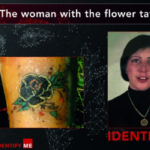
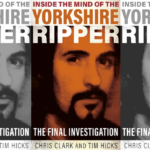

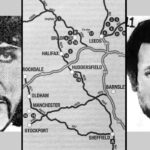
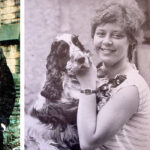

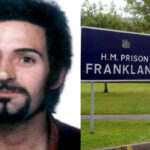

















Comments are closed.